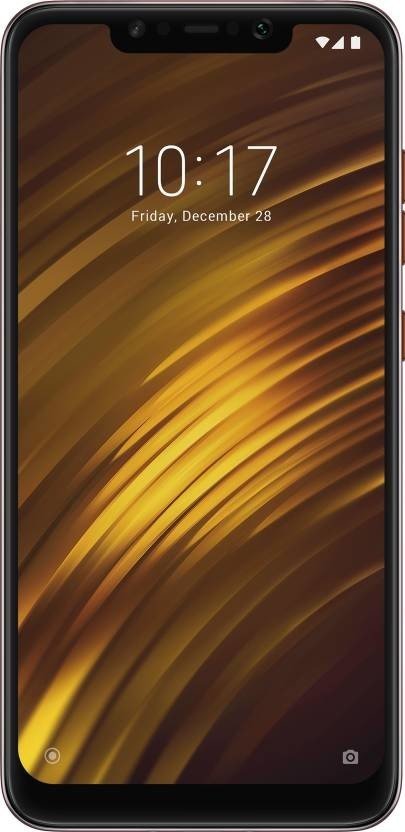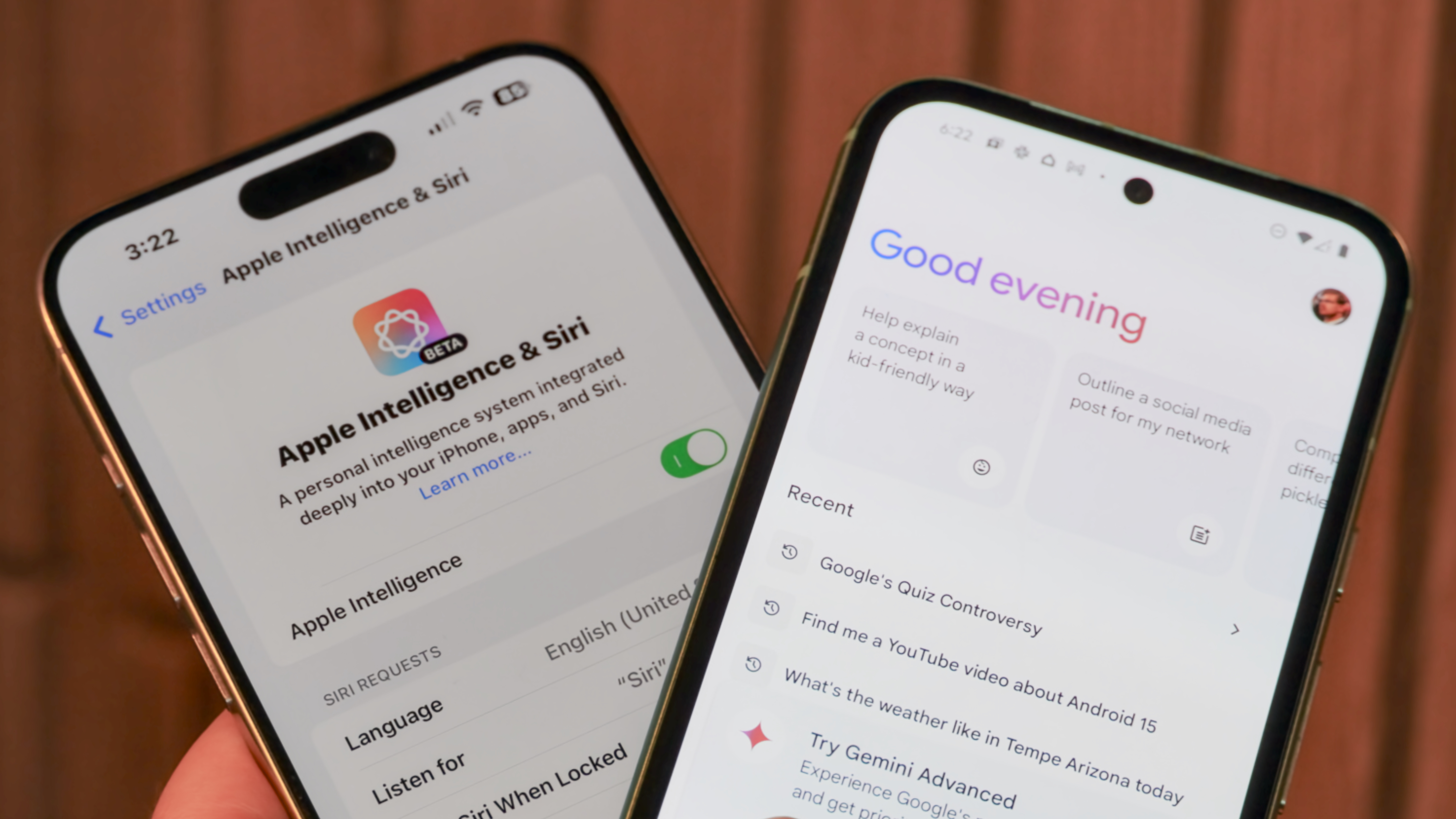OnePlus 6T vs. POCO F1: Which budget flagship should you buy?

POCO F1

Although the POCO F1 is primarily aimed at value buyers, the phone doesn't miss out on any essential features. That's what makes it such an enticing device — there just isn't another phone available today at this price point that delivers quite as much value for your money.
POCO F1
Our pick
OnePlus 6T

The OnePlus 6T introduces an in-display fingerprint sensor, but it loses out on the notification LED and the headphone jack. The base variant also comes with 128GB of storage, but with a price of $549 the phone is significantly costlier than a POCO F1.
OnePlus 6T
Great value
The OnePlus 6T is an iterative update, with the phone introducing a few new features while retaining the same overall design as its predecessor. The POCO F1 offers much of the same hardware and a larger battery and costs $200 less. If value is what you're after, then there's really only one contender.
Should you buy the OnePlus 6T or the POCO F1?
The OnePlus 6T and POCO F1 have a lot in common — they're both aimed at enthusiast users, and offer excellent hardware for the asking price. There are differences in the execution, however, with OnePlus focusing on design and software performance while POCO is all about delivering the best value possible.
The 6T is the more fragile of the two thanks to a glass back. The phone definitely looks more premium than the POCO F1, and the fit and finish are right up there with the best that Samsung has to offer. The F1, meanwhile, has a polycarbonate back with an aluminum alloy mid-frame, and what it lacks in design flair it makes up in durability. The phone is one of the more rugged devices launched this year — particularly the Kevlar option — and it has weathered its share of tumbles without any damage to the panel.
Talking about displays, the AMOLED screen on the 6T is gorgeous, and the panel quality combined with the tiny waterdrop notch give it a leg up in this category over the F1. The F1 has a decent LCD panel, but it just isn't as vibrant as the 6T, and that notch is ungainly. Both phones offer a face unlock feature that works reliably well even though it isn't as secure as using the fingerprint sensor.
The OnePlus 6T is more polished, but then again it costs nearly twice as much as the POCO F1.
POCO has done a magnificent job making sure it didn't leave out any essential features on the F1. The device is configurable with up to 256GB of internal storage, but you still get a hybrid tray with the secondary SIM slot doubling as a microSD card holder. There's also a white-only notification LED on the bottom bar for incoming notifications and charging alerts.
Get the latest news from Android Central, your trusted companion in the world of Android
There's stereo speakers as well, another feature that the 6T misses out on. In fact, the 6T has particularly tinny audio for a phone in the $500 segment, and while there are two grilles at the bottom, the secondary is purely for aesthetics. Then there's the fact that the 6T no longer has a 3.5mm jack, making it a dealbreaker for a subset of the community.
That said, the POCO F1 isn't without its share of omissions. There's no NFC or IP rating, and the phone lacks the requisite bands to work on most U.S. carriers.
| Category | OnePlus 6T | POCO F1 |
|---|---|---|
| Operating system | Android 9.0 Pie | Android 8.1 Oreo MIUI for POCO |
| Display | 6.41-inch Optic AMOLED, 2340x1080 (19.5:9) Gorilla Glass 6 | 6.18-inch IPS LCD, 2248x1080 (19:9) Gorilla Glass 3 |
| Processor | Snapdragon 845 Adreno 630 | Snapdragon 845 Adreno 630 |
| RAM | 6GB/8GB LPDDR4X | 6GB/8GB LPDDR4X |
| Storage | 128GB/256GB UFS2.1 | 64GB/128GB/256GB UFS2.1 |
| MicroSD slot | No | Yes |
| Rear camera 1 | 16MP (IMX 519), 1.22-micron, f/1.7, OIS 4K/60, 720p/480p video | 12MP, 1.4μm, f/1.9 Dual PDAF |
| Rear camera 2 | 20MP (IMX 376K), 1-micron, f/1.7 | 5MP, 1.12μm, f/2.0 |
| Front camera | 16MP (IMX 371), 1-micron, f/2.0 | 20MP, 0.9μm, f/2.0 |
| Connectivity | Wi-Fi 802.11ac 2x2 MIMO, Bluetooth 5.0 LE, NFC, GPS | Wi-Fi 802.11ac 2x2 MIMO, Bluetooth 5.0 LE, NFC, GPS |
| Audio | USB-C Single speaker | 3.5mm headphone jack Stereo speakers |
| Battery | 3700mAh Non-removable | 4000mAh Non-removable |
| Charging | USB-C Dash Charge | USB-C Quick Charge 3.0 |
| Water resistance | No rating | No rating |
| Security | In-display fingerprint sensor Face unlock | Fingerprint sensor Face unlock |
| Dimensions | 157.5 x 74.8 x 8.2 mm 185 g | 155.5 x 75.3 x 8.8mm 180g |
| Colors | Mirror Black, Midnight Black | Black, Blue, Red, Kevlar |
Both devices come with the Snapdragon 845 and 6GB or 8GB of RAM, and are available with up to 256GB of internal storage. The performance is near-identical across both devices, although the 6T takes a slight lead as OxygenOS is much better optimized for the hardware.
The POCO F1 is still running Oreo, and the software in general is not as fluid as OxygenOS.
To its credit, POCO added a lot of oft-requested features in its customized build of MIUI, but there's still a lot of added bloat to contend with, and it just doesn't feel as fluid as OxygenOS.
Then there's the issue of updates as well — the F1 is still on Oreo, and while a Pie update is in the works, it won't likely be delivered widely before the end of the year. By contrast, the 6T comes with Pie out of the box, along with OnePlus' own set of customization options.
The removal of the 3.5mm jack has allowed OnePlus to fit a larger 3700mAh battery, but the F1 outmatches the device with a 4000mAh unit. Battery life in general is better on the F1 thanks to MIUI's aggressive memory management, and the F1 comfortably manages to deliver well over a day's worth of use, extending to two days most of the time.

Costly by comparison.
The OnePlus 6T does offer a few new features that make it stand out, but it also has its share of drawbacks. The camera is average for a phone in this category, the new fingerprint sensor just isn't reliable, and it's missing a headphone jack and notification LED.

Harish Jonnalagadda is Android Central's Senior Editor overseeing mobile coverage. In his current role, he leads the site's coverage of Chinese phone brands, networking products, and AV gear. He has been testing phones for over a decade, and has extensive experience in mobile hardware and the global semiconductor industry. Contact him on Twitter at @chunkynerd.
